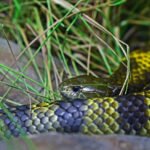Polar bears, the largest land predators on Earth, are awe-inspiring creatures that have long captured the imagination of wildlife enthusiasts and researchers alike. Their remarkable physical attributes and unique behaviors make them a subject of curiosity and wonder.
In this article, we explore into some intriguing facts about these iconic Arctic inhabitants.
Largest Land Predators on Earth
The polar bear holds the distinguished title of being the largest land predator on Earth. Adult males can weigh up to 1,500 pounds and measure over 10 feet in length. Their massive size and strength allow them to dominate their Arctic habitat, showcasing their prowess as apex predators.
A Voracious Appetite: Can Eat up to Ten Percent of Their Own Body Weight
Polar bears have a voracious appetite, consuming an impressive amount of food to sustain their massive bodies. These carnivorous giants can eat up to ten percent of their own body weight in a single feeding session, making them truly remarkable in the animal kingdom.
Exceptional Swimmers: Can Swim Non-Stop for Over 60 Miles
One of the lesser-known talents of polar bears is their incredible swimming ability. They are powerful swimmers and can cover vast distances without a break. In fact, these astonishing creatures can swim non-stop for over 60 miles, showcasing their stamina and adaptation to their Arctic environment.
Tiny Beginnings: Newborn Polar Bears as Small as Rats
Contrary to their imposing adult size, newborn polar bears start their lives as tiny and vulnerable creatures. Newborn cubs are approximately the size of rats, weighing only about a pound. It’s incredible to think that they will grow into the massive predators that roam the Arctic in adulthood.
Remarkable Survival Skills: Can Survive for 10 Days Without Eating
Polar bears possess exceptional survival skills, enabling them to endure harsh conditions in the Arctic. Incredibly, they can survive for up to 10 days without food. This adaptive trait is crucial for their survival during times when food is scarce.
Not Just White Fur: Transparent Fur with Water-Repellent Properties
Contrary to common perception, the fur of a polar bear is not white. It is, in fact, transparent and colorless, with a hollow core that scatters and reflects light, giving the appearance of a white hue. Moreover, the fur is oily and water repellent, providing insulation and helping the bears stay dry in their icy habitat.
Polar bears are an iconic symbol of the Arctic and a crucial part of the ecosystem. Their adaptability, strength, and unique physical attributes make them a subject of fascination and admiration. Understanding these magnificent creatures not only enriches our knowledge of the natural world but also emphasizes the importance of conserving their delicate habitat to ensure a future for these majestic giants.



